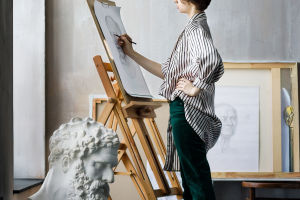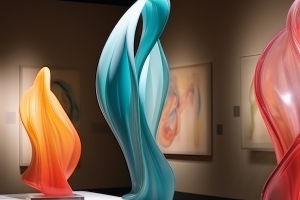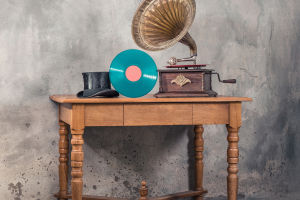Lykkers, the evolution of technology has opened doors to new realms, but not all innovations are welcomed with open arms. One such development stirring debate is AI-generated art.
While some celebrate its potential, many artists express serious concerns. What fuels this conflict? Delving deep into the argument reveals complex layers of emotions and principles tied to the world of creativity.
AI Art Explained
Unlike helpful AI tools that assist designers (like color palette generators), AI art generators function fundamentally differently. Users input simple text prompts – "sunset over mountains, Van Gogh style." The system then rapidly analyzes vast databases of existing images and remixes elements to produce a new visual. It creates, but without human intention guiding each creative decision.
Data Dilemma
The core friction ignites over training data. Most AI models learn by scraping billions of online images, including copyrighted artworks, often without the creator's knowledge or consent. Imagine someone photocopying pages from thousands of books, blending sentences, and selling new stories—without ever asking the original authors. That's how many artists view their work being used: exploited.
Copyright Gray Zone
Legally, the situation is murky. Current copyright laws struggle to address AI outputs. While the generated image might be "new," its DNA comes from scraped artworks. Artists argue this bypasses their rights, similar to how a musician would object to their melodies being sampled without permission. It feels like theft, even if the letter of the law hasn't fully caught up.
Respect Deficit
Beyond legality lies a profound sense of disrespect. Developing artistic skill demands decades of practice, study, and emotional investment. Seeing an AI instantly mimic a signature style devalues that journey. It suggests the years spent honing craft are reducible to mere data points, stripping away the artist's personal struggle and triumph inherent in human creation.
Economic Threat
The impact hits wallets directly. Businesses seeking cheap, fast visuals increasingly turn to AI generators. Commissioned illustration jobs for book covers, marketing, or concept art dwindle. While discerning clients still value human touch, many freelance artists face plummeting opportunities and income, competing against algorithms that work for pennies and never sleep.
Value Erosion
The sheer speed and volume of AI art creation erodes perceived value. When stunning images flood platforms instantly, the cultural appreciation for the time, skill, and material costs behind handmade art diminishes. Why value a hand-painted portrait taking weeks when an AI produces hundreds of variations in minutes? This cultural shift threatens art's intrinsic worth.
Community Impact
Traditional art fosters community—mentorships, collaborations, shared struggles. AI art generation is inherently solitary. It doesn't build networks, share techniques learned through failure, or contribute to a shared cultural dialogue in the same organic way. The human ecosystem supporting artists weakens when machines dominate output.
Conclusion
The AI art revolution isn't inherently evil, but its current trajectory tramples human creativity's heart. True progress demands respecting artists' rights, labor, and unique spark. Lykkers, next time you see dazzling AI art, pause. Ask: "Whose vision trained this machine?"
Champion creators by valuing human-made art, demanding ethical tech, and remembering that true creativity blooms from lived experience, not just data. The canvas of the future needs both silicon and soul. Support the hands that dream.


